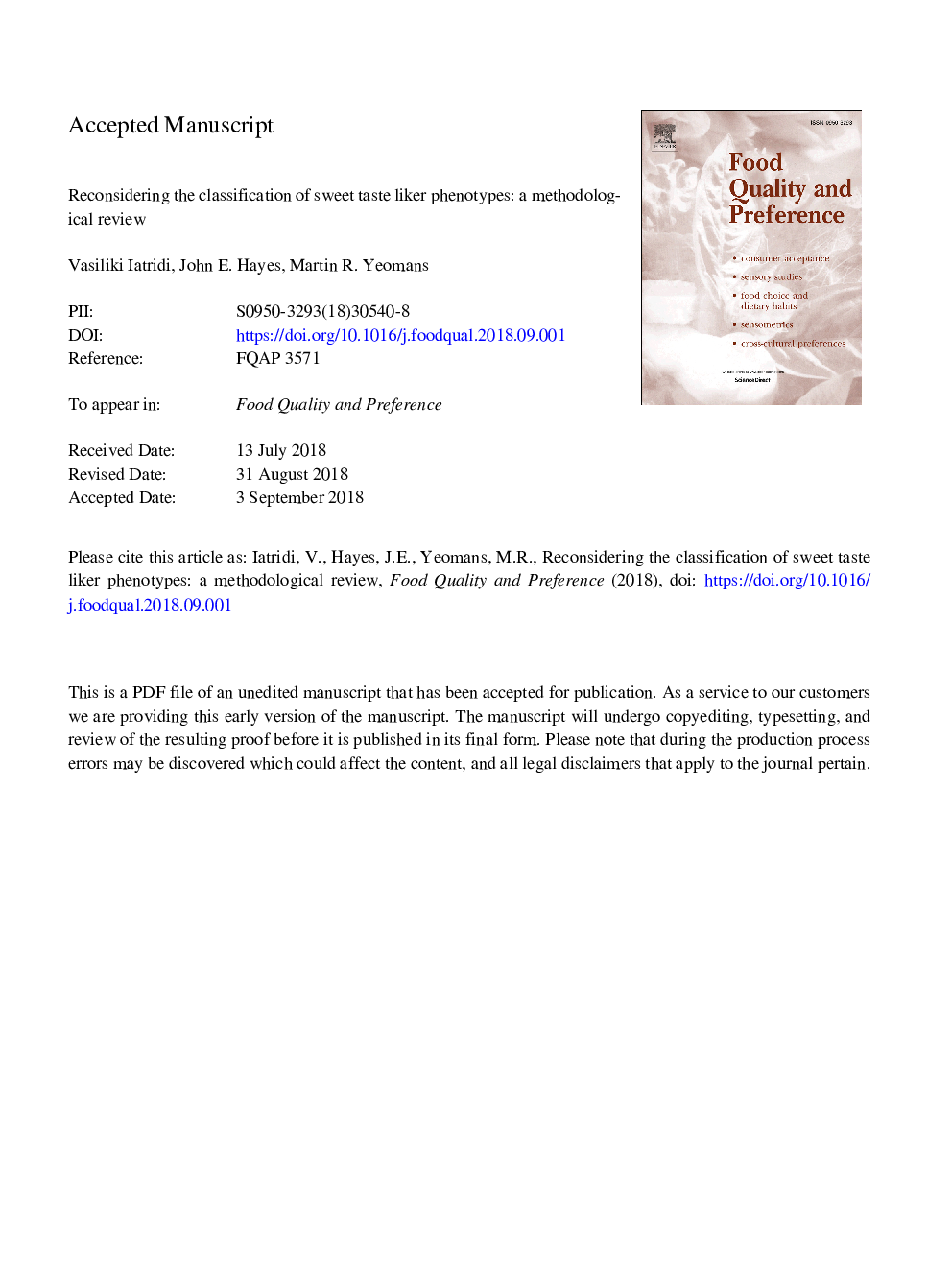| کد مقاله | کد نشریه | سال انتشار | مقاله انگلیسی | نسخه تمام متن |
|---|---|---|---|---|
| 11025225 | 1701008 | 2019 | 73 صفحه PDF | دانلود رایگان |
عنوان انگلیسی مقاله ISI
Reconsidering the classification of sweet taste liker phenotypes: A methodological review
ترجمه فارسی عنوان
بازنگری طبقه بندی فنوتیپ های طعم دهنده شیرین: بررسی روش شناختی
دانلود مقاله + سفارش ترجمه
دانلود مقاله ISI انگلیسی
رایگان برای ایرانیان
کلمات کلیدی
VASGLMsHCASTTS.D. - SD.Flavor perception - ادراک طعمstandard deviation - انحراف معیارHierarchical cluster analysis - تجزیه و تحلیل خوشه سلسله مراتبیTaste preference - ترجیح طعمbody mass index - شاخص توده بدنBMI - شاخص توده بدنیSugar - قندvisual analog scale - مقیاس آنالوگ بصریhedonics - هدیونیکgustation - گشت و گذار
موضوعات مرتبط
علوم زیستی و بیوفناوری
علوم کشاورزی و بیولوژیک
دانش تغذیه
چکیده انگلیسی
Human ingestive behavior depends on myriad factors, including both sensory and non-sensory determinants. Of the sensory determinants, sweet taste is a powerful stimulus and liking for sweetness is widely accepted as an innate human trait. However, the universality of sweet-liking has been challenged. Sub-groups exhibiting strong liking (sweet likers) or having aversive responses to sweet taste (sweet dislikers) have been described, but the methods defining these phenotypes are varied and inconsistent across studies. Here, we explore the strengths and weaknesses of different methodological approaches in identifying sweet taste liker phenotypes in a comprehensive review. Prior studies (Nâ¯=â¯71) using aqueous sucrose solution-based taste tests and a definition of two or more distinct hedonic responses reported between 1970 and 2017 were summarized. Broadly speaking, four different phenotyping methods have been used: 1. Interpretation (visual or statistical) of the shape of hedonic response curves, 2. Highest preference using ratings, 3. Average liking above mid-point or Positive/Negative average liking method, and 4. Highest preference via paired comparisons. Key methodological weaknesses included the use of subjective or arbitrary criteria as well as adoption of protocols unsuitable for large-scale implementation. Overall, we did not identify a method distinctly superior to the others. Given the role of both hedonics and reward in food intake, a better understanding of individual variations in sweet taste perception could clarify how sweet-liking interplays with obesity or addictive behaviors such as alcohol misuse and abuse. The development of a universally used statistically robust and less time-consuming classification method is needed.
ناشر
Database: Elsevier - ScienceDirect (ساینس دایرکت)
Journal: Food Quality and Preference - Volume 72, March 2019, Pages 56-76
Journal: Food Quality and Preference - Volume 72, March 2019, Pages 56-76
نویسندگان
Vasiliki Iatridi, John E. Hayes, Martin R. Yeomans,
